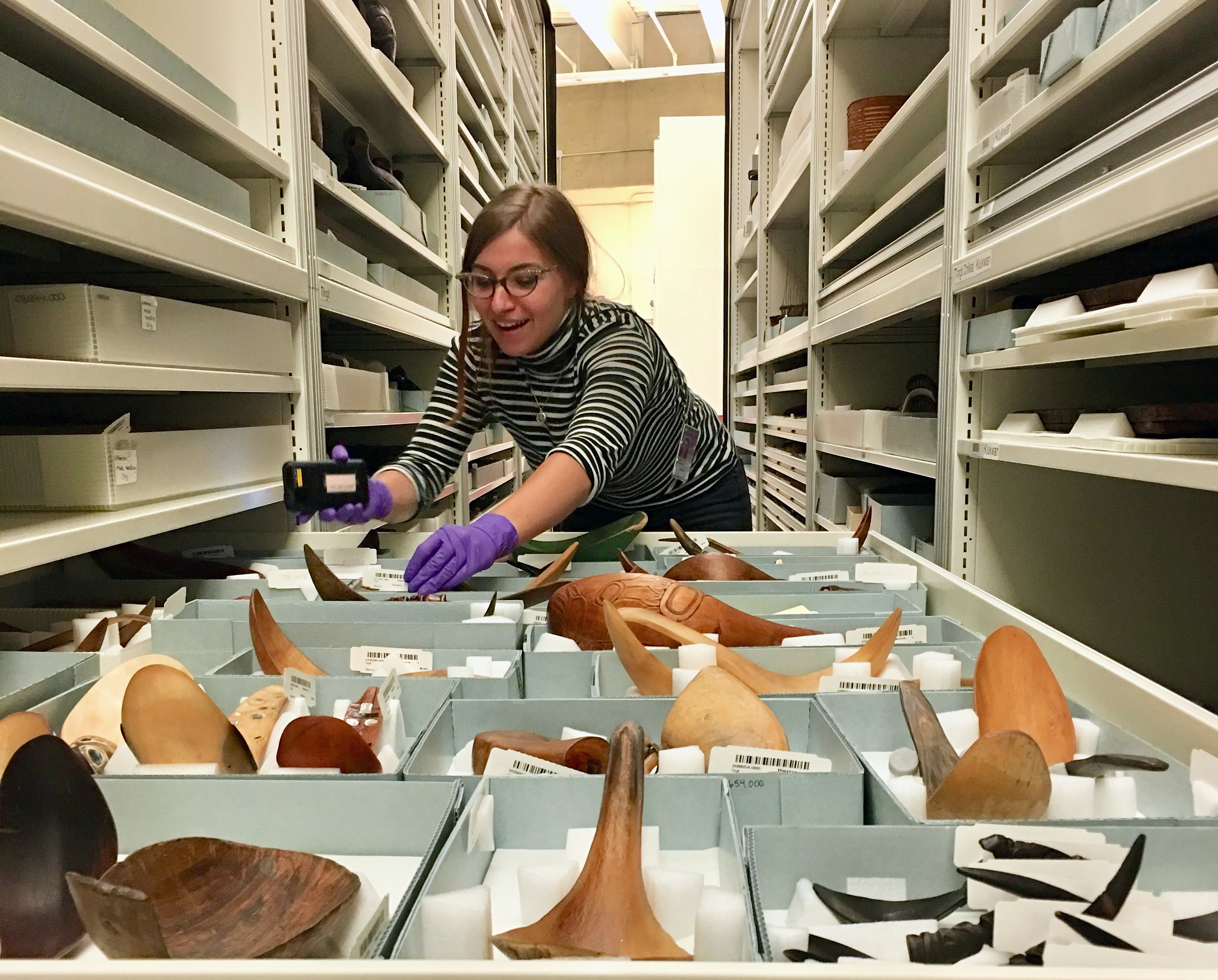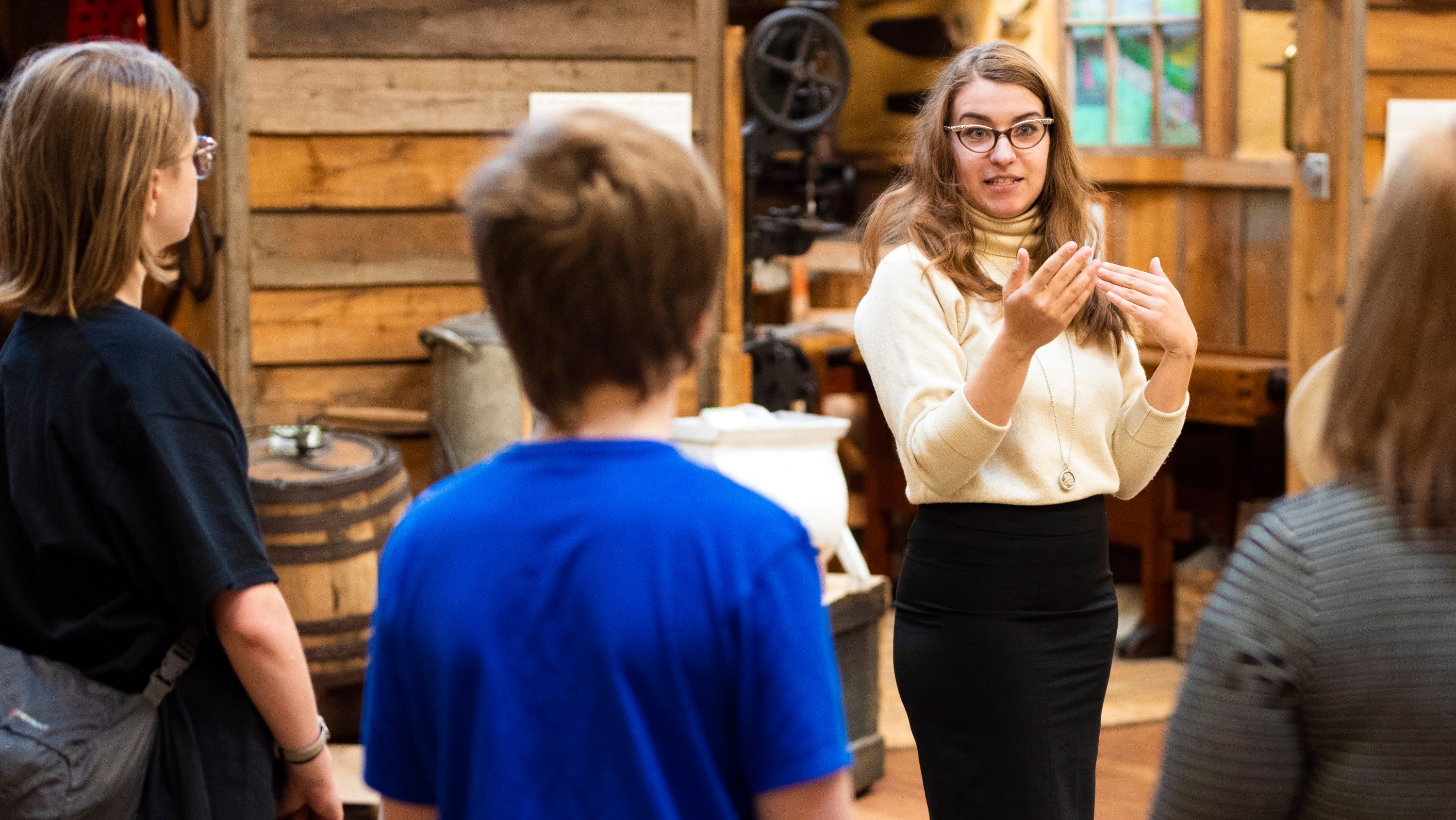Watching the Inuit film Atanarjuat: The Fast Runner several years ago, Lauren Comba found herself riveted by its ancient story.
Written, directed and acted entirely in the Inuktitut language, the 2001 landmark award-winning film retells an Inuit legend passed down through centuries of oral tradition.
The film’s narrative was a part of history Comba had never heard about, and working at the time as a junior volunteer at Fort Edmonton Park interpreting Western Canada’s past, she realized it was missing from the story she was sharing.
“There I was telling visitors about the settler-colonial version, coming out west on trains and farming, but this film was capturing a timeless story that would have existed at the same time. It caused me to think about what was missing in talking about Indigenous history and the way we are used to sharing these stories in the institutions I was familiar with, like museums. It’s not complete.”
It was that knowledge gap that motivated Comba, a history lover and dedicated museum worker, to graduate this week with a bachelor of science in environmental and conservation sciences/bachelor of arts in Native studies, a combined degree program offered through the Faculty of Native Studies at the University of Alberta.
Her multifaceted education, steeped in both Native Studies and the Faculty of Agricultural, Life & Environmental Sciences, showed her the importance of taking a nuanced, mindful approach to Indigenous perspectives, combined with the technical skills and theories a science degree offers.
“I was challenged to bring the academics of science back to Indigenous peoples and the communities you’re learning from, and to think about what that means. That creates a grounded approach.”
As a settler, Comba now feels more able to understand and advocate for the inclusion of Indigenous narratives in museums.
“I had understood the importance of Indigenous peoples but had never connected directly with Indigenous communities to understand how museums were communicating and representing their stories. Having the opportunity to learn from knowledge keepers, elders and renowned scholars at the U of A showed me where gaps and opportunities exist in colonial spaces like museums.”
Classes and internships along the way gave Comba a better understanding of how Indigenous communities manage their cultural knowledge. A field course in the Yukon taught her about a land-based community program where local Indigenous people shared their harvests of medicinal plants, making teas and salves in a traditional way to help one another, while passing on lessons about responsible stewardship of the land.
“It shows a marriage of how the environment is used in ways we could call historical, but are still ongoing.”
And a placement in the Alberta Smithsonian Internship Program demonstrated a respectful way of curating cultural artifacts at the Smithsonian’s National Museum of the American Indian in Washington, D.C.
In consultation with Indigenous leaders, the Smithsonian Institution stores items from each community together, instead of by object type. As well, nations with confirmed claims or ownership of artifacts who choose to keep them at the Smithsonian can access their items — considered to be community ancestors — for culturally appropriate uses.
“It showed how the biggest museum complex in the world can respond to Indigenous communities. For so long, museums have thought they know best. But it’s the people who have stewarded these objects since time immemorial who know them best.”

Now working as a programmer and education co-ordinator for the Strathcona County Museum & Archives, Comba says her storytelling has changed from those first attempts years ago at Fort Edmonton Park.
“When I give tours now, I want the longstanding Indigenous presence on the land to be at the forefront of visitors' minds, as well as mine, and not an afterthought or an addendum,” she says.
“Indigenous history is not isolated to only Indigenous peoples, but is for all of us to recognize. This is what reconciliation means to me, not only recognizing this interconnectedness and the meaning of it to me, but sharing that understanding with everyone I speak with.”
She says she’ll be guided by a more responsive, inclusive and localized approach when working with Indigenous cultures and histories.
For instance, the museum’s summer program now includes Indigenous interpretation as youths tour local nature trails.
“When you start to look at the landscape, you can see Indigenous people have been shaping and stewarding this land for generations.”
Comba has also helped support the museum’s outreach and collaboration with local Métis artists so their community stories are told through their own voices.
She hopes to eventually turn her career to advocating for decolonizing practices around cultural preservation at a larger scale.
“It is important that institutions like museums, academia and natural resource development organizations bridge this gap, to make them places where Indigenous people are meaningfully included.”
All Canadians should advocate for the promotion and prosperity of Indigenous worldviews, she believes.
“I encourage us as settlers to keep challenging ourselves and our circles to listen, to be open and more empathetic. That helps find common ground for people to see each other as neighbours. And building relationships only brings good.”
Comba was supported in her studies by the Faculty of Native Studies Academic Excellence Scholarship, the Eric Newell Dean's Entrance Citation in Native Studies, the Trenholme Dickson and Letita S Dickson Prize, the BA(NS)/BSc (ENCS) Award and the Louise McKinney Post-Secondary Scholarship.
